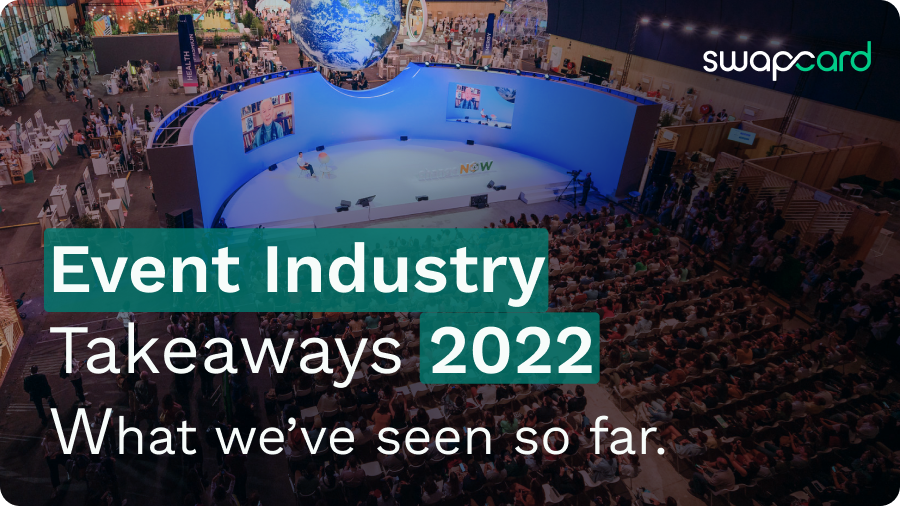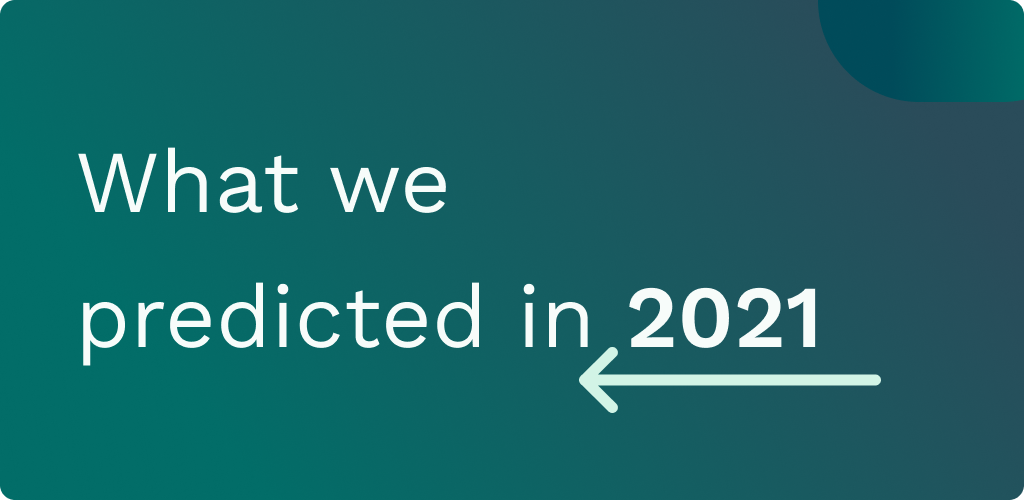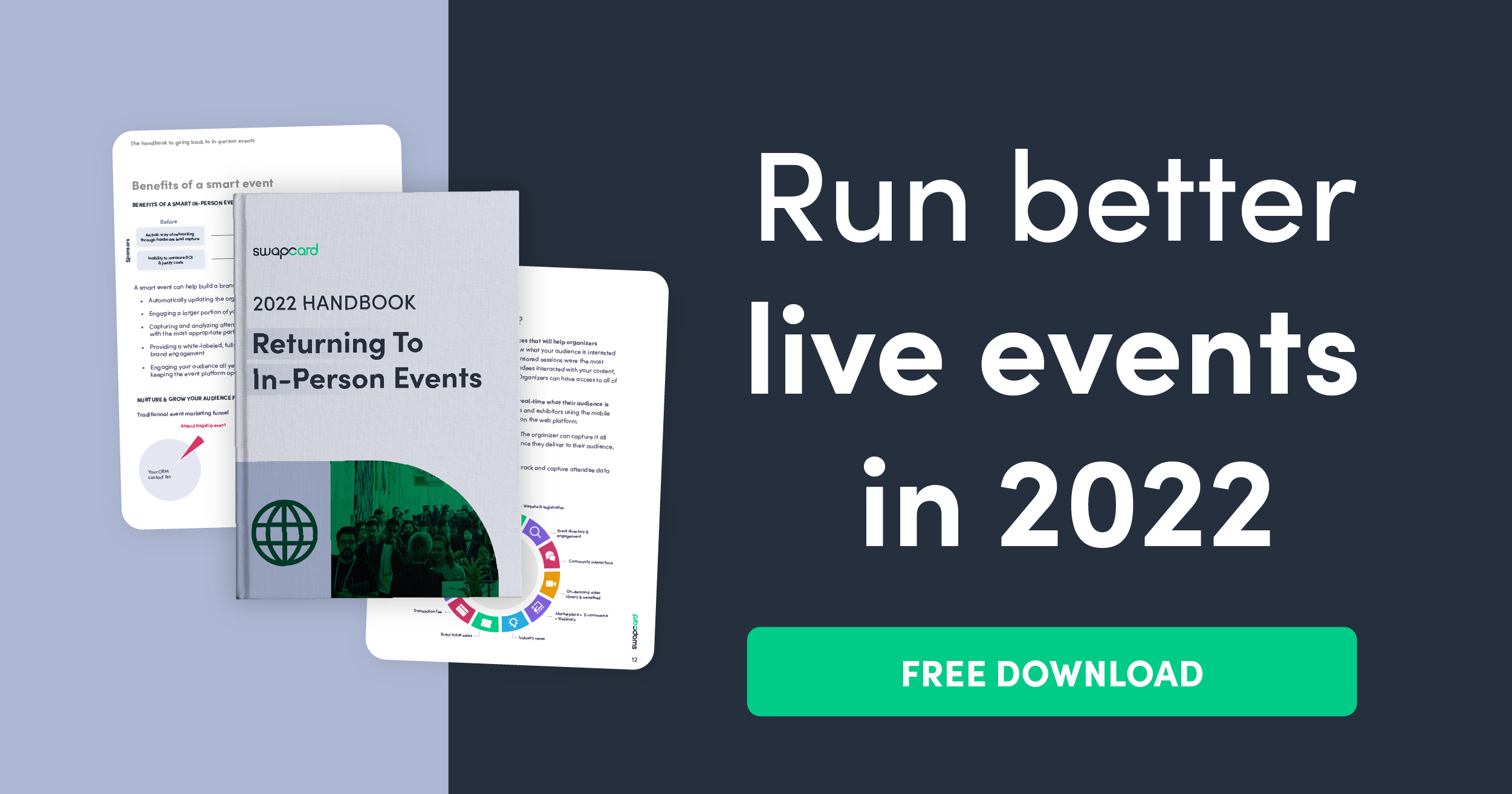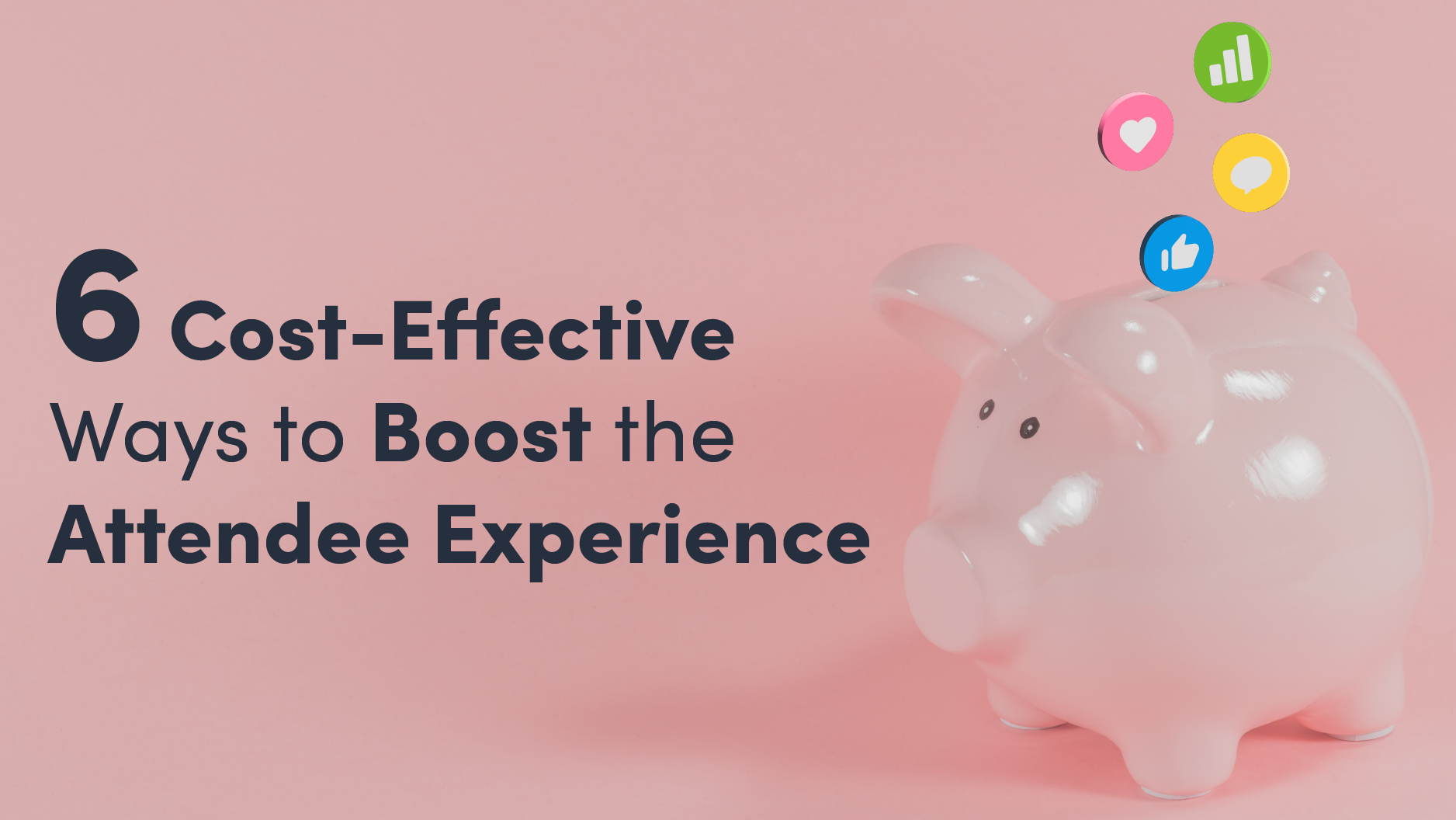Event season is in full swing! Here at Swapcard, we’ve had the opportunity to not only support organizers as they deliver unforgettable in-person experiences, but also participate as attendees and exhibitors in support of the events industry.
Our team has brought back some important firsthand insights and takeaways from their onsite experiences that we want to share here. We’ll also dive a little bit deeper and take a look at the year so far, contrasting what we expected to happen in 2022 with what we’re actually seeing.
From sustainability to the importance of engagement features and registration, we've found that event technology has become an integral tool in an event organizer’s kit. Event technology has made significant leaps forward, demonstrating the continued importance of incorporating digital elements into successful onsite experiences.
Hybrid
Hybrid events were the name of the game coming into 2022.

Source: Evolve 2.0.
Event organizers were often left scrambling for alternative event formats as new lockdowns and restrictions came into effect, upending their plans to run onsite experiences. This is where hybrid events came in as the perfect compromise solution.
Hybrid events, when run correctly by treating the two audiences as separate but distinct entities, are indeed a great option. The reality is that many organizers are offering virtual components in 2022, but are not nearly as invested in them as they were pre-pandemic. In-person experiences are back, and they’re back in a big way. This, at the cost of the virtual element.
However, this doesn’t apply globally. A recent survey of event professionals shows that 47% of Asia Pacific and 41% of Latin America event organizers plan to offer hybrid events in 2023 compared to 29% in North American and 33% in Europe. This leaves a lot to consider when looking forward to event planning in 2023.
Sustainability
There was growing chatter about sustainability in events and reducing our environmental impact in 2021. Research on the environmental impact of events has shown that running a hybrid or virtual event decreases your carbon emissions by 90%. Event professionals aimed to decrease their carbon footprint while still delivering exceptional experiences. The question was, could organizers follow through on their sustainability commitments once there was a broader return to in-person?
Community
The pandemic reinforced the importance of community at both a personal and professional level. For the events industry, this meant offering a variety of smaller, bite-sized content and activities spread throughout the year, giving organizers the opportunity to grow their audience, increase their brand reach, and generate leads year-round. Did we see the high level of investment in this option as we had expected earlier in the year?
The reality is that community building takes time and resources. Most resources are being channeled into providing experiences that are enticing enough to draw audiences back onsite. With in-person events roaring back, community has taken a backseat. That doesn’t mean community is going anywhere, it just means that it’s going to take a bit more time (and investment) to get going.
.
In addition to what they’ve seen at other major industry events in 2022, our team recently came back from IMEX America and brought with them some really eye-opening insights from their experience there. With over 12,000 participants and 3,331 exhibitors from 180+ countries, IMEX highlighted some key developments we’ve come to find at top-tier events this year.
Sustainability is here to stay - and that’s what we want to see
With in-person events coming back, organizers have realized that there’s no better time than now to follow-through on their sustainability commitments. Although there is a notable desire to reduce the carbon footprint of their event, organizers still don’t know how to properly estimate their event-related carbon emissions or how to offset their carbon footprint. This is where event tech is making the greatest impact in 2022.
Event tech facilitates fully paperless events with wayfinding, registration, and session access all available digitally. Offering a virtual component also helps reduce unnecessary travel while also helping companies deal with inflation as they don’t have to send large contingents onsite. Google is one of the major examples of a company cutting back on business travel for employees and limiting them to “business critical” trips.
Event technology is essential
A single technology solution is becoming more and more attractive for organizers. Organizers and attendees alike want a reliable and intuitive tool that can make their event experience fun and stress-free. This includes offering a mobile app, streamlined in-app registration, session access controls, and more.
According to event professionals surveyed about their experiences in 2022, event technology that improves the attendee experience continues to be in demand. It is becoming a requirement to find a reliable technology partner that helps organizers meet attendance goals (thanks to their virtual and in-person components), connect global audiences, and deliver memorable and seamless experiences.
Event tech has also created its space in the industry. More and more industry events have a tech area, offer conferences about event tech, and create reports to help buyers navigate this crowded space. IMEX America is the perfect example!
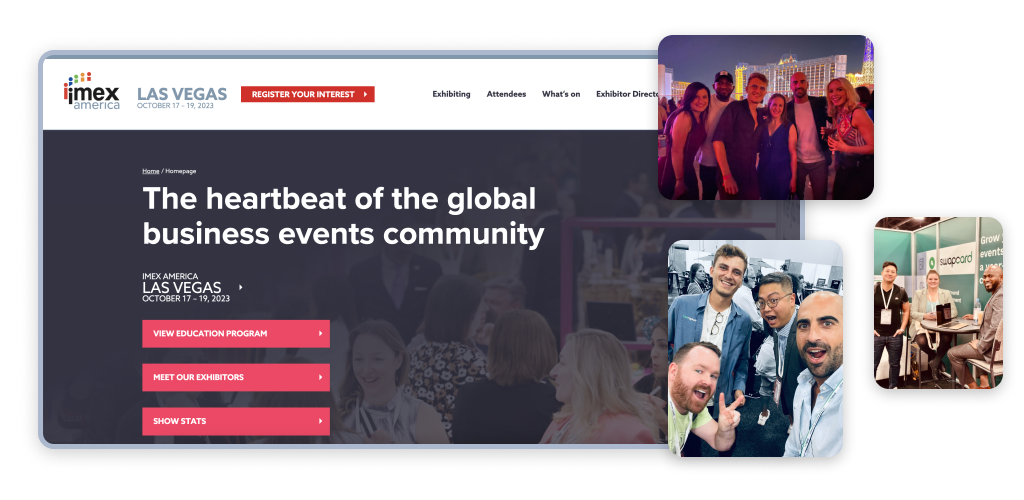
Event technology has become an integral part of successful event strategies. Familiarity with technology over the course of the pandemic has helped it become a staple within the events industry in 2022. Its incorporation into the events world is to the benefit of attendees, exhibitors, and sponsors alike.
AI is proving its value
The goal of an AI system is to save your attendees and exhibitors time in finding the right people to network with and content to enjoy. Event tech platforms that offer this technology make meeting the right individuals, attending the right sessions, meeting the right exhibitors and buying the right products at an event smoother and easier than ever before.
Internal testing run throughout 2019 and 2020 by Swapcard’s data squad reveals that our AI system improves the connection rate by over 20% compared to simply using the platform without matchmaking. This has become invaluable as attendees are becoming reacquainted with the in-person experience and wanting to better manager their time.
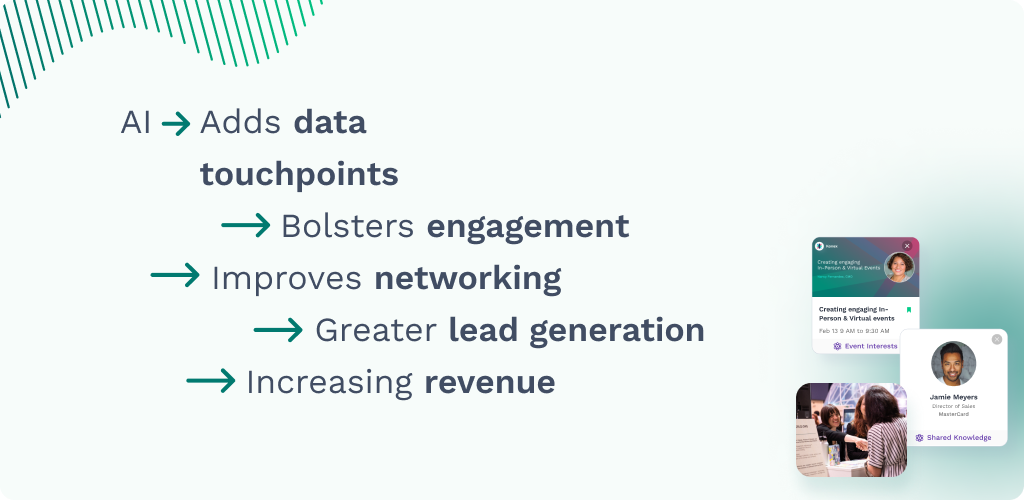
We hope you enjoyed this quick overview of what the team here at Swapcard has seen this year. Stay tuned as we take a look into predictions for 2023 and what’s to come!
Curious about event industry trends that have proven to be valuable throughout the year? Get a free copy of our ebook to find out more.
